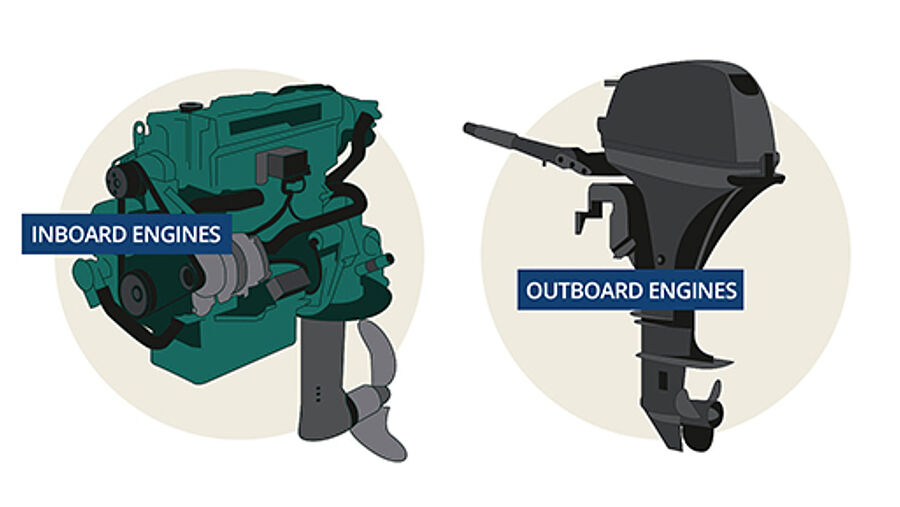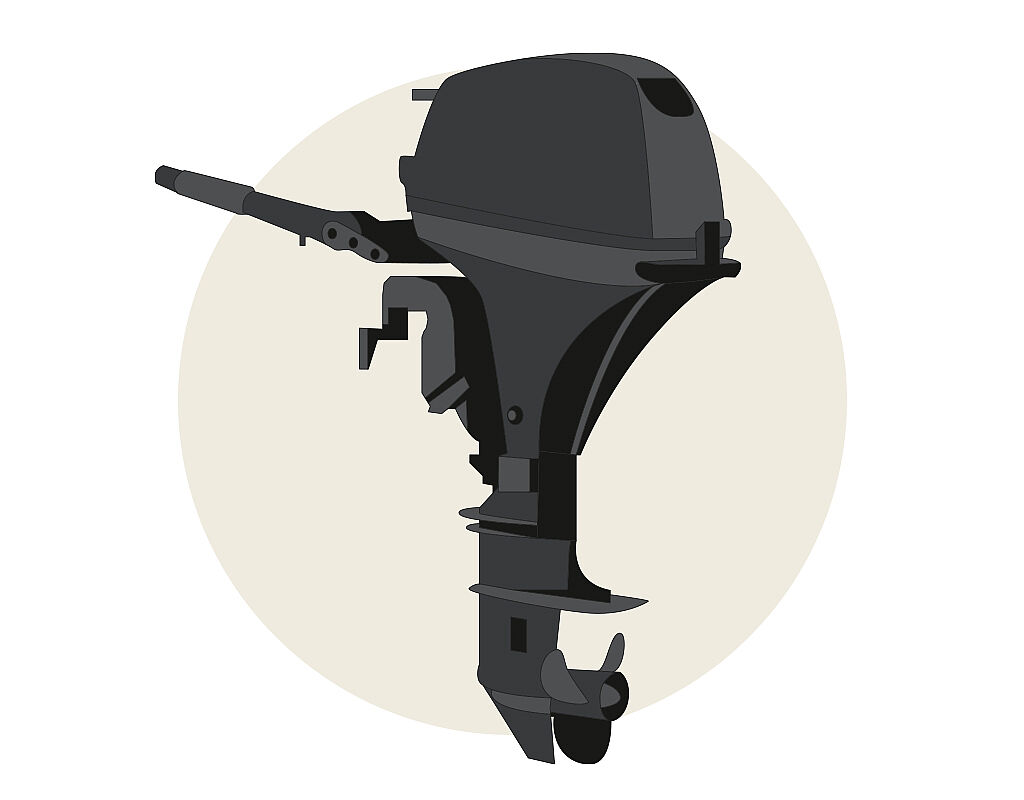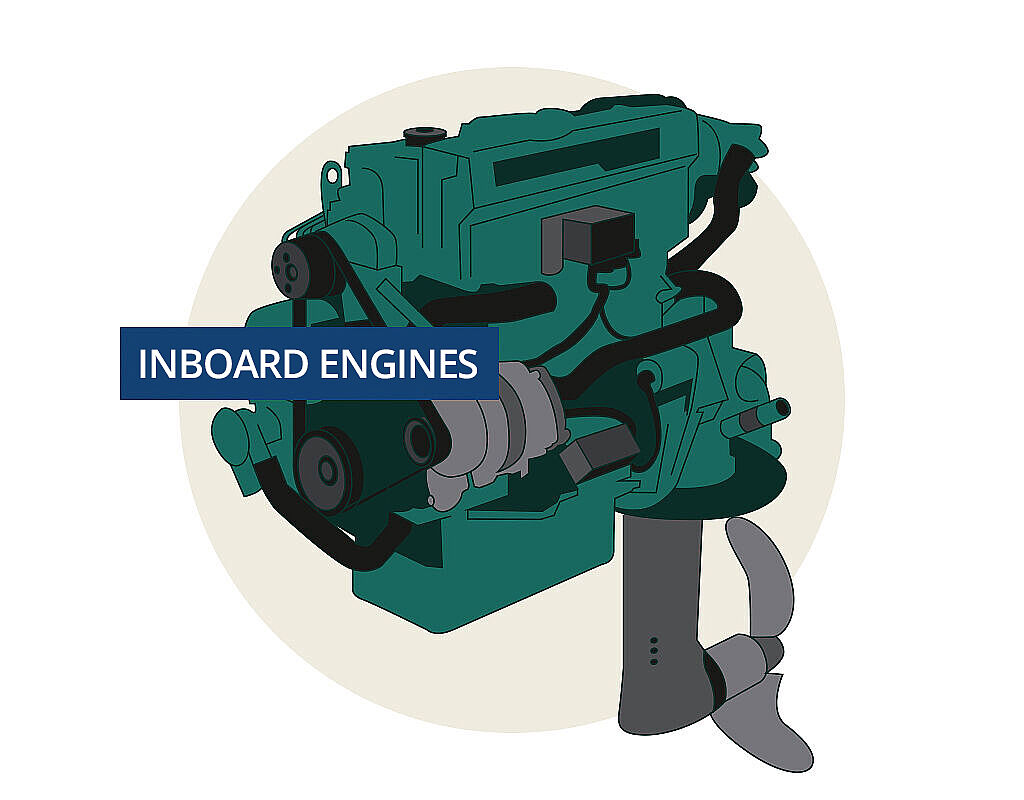Engine care – checks you can easily carry out
In order to prevent major damage, proper engine care also plays a role in addition to the major engine inspection. Even a small action here and there can make all the difference. We have compiled a list of the checks you can easily carry out during the season for outboard and inboard motors.

OUTBOARD ENGINES
1. Propeller and fin - damage to the propeller will cause the engine to run unevenly. Careful turning can identify possible blockages or an imbalance. The fin should also be free of damage. This is where the engine is most likely to come into contact with the bottom. Before starting these checks, make sure the main switch is off and the emergency stop switch pulled.
2. Oil level - check using the control rod: The level of the engine oil should be exactly between the two marks. And pay attention to the colour of the oil - new oil comes out bright and shiny but, over time, it will turn dark. It should never look grey or foamy. This indicates serious damage, e.g. to the cylinder head. In this case, take it to a specialist.

3. Water cooling system - Regular flushing with fresh water prevents deposits. This is particularly useful in areas with saltwater, as algae or sand can build up in the system. For flushing, there are special flushers that are placed over the water inlet and connected to a standard garden hose and you do this with the engine idling. The control jet must be warm, but never hot. If this is the case, the engine must be switched off immediately and the impeller pump checked.
4. Spark plugs - Older 2-stroke engines: fouling suggests a fuel mixture that is too rich. 4-stroke engines: heavy deposits on the spark plugs indicate worn piston rings. In principle, however, dirty spark plugs are not a problem. They can simply be cleaned and reinserted. An increased distance between the electrodes (>0.7-0.9mm) can be remedied by careful bending. The spark plug should then be replaced at the earliest opportunity.
5. Tightness - look under the cover: have water, fuel or oil collected in the engine sump? If so, consult a specialist company. Also check hoses, connections and hose clamps. Regular application of corrosion protection will prolong the life of relevant components.
6. Sacrificial anodes - Anodes on the engine and on the power trim can be checked without much effort. If only about half of the material is left, the anode in question has done its job and should be replaced when the opportunity arises. Note: Sacrificial anodes should always be matched to the area of use (fresh or salt water).
7. Carburetor - If the boat is not going to be used for a long time during the season, it is advisable to remove fuel from the system and in the carburetor. Why? Oxygenation can cause residue to build up and clog the jets. To do this, cut off the fuel supply while the engine is running at a higher speed and empty the system. Caution: On engines with more than one carburetor, the upper carburetor runs empty faster and the system can overheat.
INBOARD ENGINES
1. V-belt - Nothing moves without the V-belt. The tension must not allow more than 1-2 cm of play at the longest point, otherwise it must be tightened. Always keep a spare V-belt in the toolbox, because the part is under high stress and can wear out easily.
2. Oil level - Same principle as for the outboard: engine oil is always measured when cool. It also doesn't hurt to check the level of the gearbox oil now and then. Caution: Gear oil is partly transparent. A cloth or sheet of paper under the dipstick helps with the reading. If available, it is worth looking inside the sail drive gearbox.

3. Tightness - check hoses and hose points from time to time. Are rubber parts supple and are clamps tight? Are there signs of corrosion at the joints? If present, the bellows or sleeve should also be checked regularly. Mussel growth, for example, quickly damages material because of sharp edges.
4. Seawater filter - Close the corresponding seacock, open the lid and remove the strainer to remove dirt. Check the seals for damage at this time. When reinserting, make sure that the strainer and seal are correctly seated, fill in a little water beforehand and close the lid again. This ensures that the impeller pump does not run dry for too long. After the check: Start the engine and check the exhaust. If water comes in evenly, everything is in order.
5. Fuel filter - Due to the design, a visual inspection of the pre-filter is no longer possible. A look inside the filter at least reveals whether coarse dirt has collected (and this can indicate diesel pest, for example). If water beads collect at the bottom, open the water separator screw to remove them from the system.
6. Cooling water level - On boats with two cooling circuits, the level of the cooling water tank should be checked. Measure when cold and top up if necessary. If the level drops again after the boat has been used, consult a specialist.
7. Tank - The ventilation of the tank is essential and at the same time a gateway for various problems. Therefore, check whether the opening is blocked or otherwise damaged. Use a torch to inspect the bottom of the tank when it is low. Look for signs of diesel pest. Diesel additives protect during long periods of idling.
As a general rule, Pantaenius recommends that maintenance intervals be strictly adhered to in accordance with the manufacturer's instructions. Regular, usually annual, engine inspections are a matter of course. As a rule, warranty services depend on compliance with these scheduled maintenance intervals.
